- Home
- Daniel Defoe
The Storm Page 3
The Storm Read online
Page 3
The timing of the November storm added insult to injury, for had it come just a few months earlier, when his tile business was still a going concern, Defoe would have made a fortune overnight. As he pointed out in The Storm, the price of tiles rose ‘from 2Is. per Thousand to 6 l. for plain Tiles; and from 5os. per Thousand for Pantiles, to 10 l. and Bricklayers Labour to 5s. per Day’ (p. 57). Although the prices soon came down, tiles remained in high demand, and Defoe knew that had he still been in the roof-tiling business, he would have been in a position to pay off all his debts within a few weeks of the storm. As it was, he had to suffer the success of his old business rivals, and read advertisements such as this one, from the Daily Courant for 24 December 1703:
This is to give Notice to all Persons who may have occasion for good new well burnt plain Tyles, that they may be supply’d with what quantity they want at 3 l. 5 s. per Thousand, at Mr. Harveys’ a Timber Merchant’s Yard near Puddle-Dock. Likewise good Pan-Tyles to be sold for 6 l. per Thousand.
It reads like a scene from one of his later novels, in which the fear of debt and failure haunts the narrators, whose economic fates are meted out with calm Presbyterian irony. ‘’Tis an ill Wind that blows no Body good,’ wrote one of his contemporaries on 29 November, ‘but I’m sure both Tilers and Bricklayers will be much the better for this Storm.’20 To think what he might have done with such a windfall! But Defoe always wrote more compellingly of loss than of gain, and it is here, in The Storm, that he draws closest to its source, where the relationship between shared disaster and private ruin is evident on almost every page.
The storm, for Defoe, is the third in the trinity of disasters which struck the capital city in his lifetime, and he wrote more than once about each of them in the course of his writing career. London, ‘the monster city’ in the words of the historian Jack Lindsay, is presented by Defoe as a carefully delineated geography of suffering, both collective, as in the case of plague, fire and storm, and personal, as in the case of bankruptcy, prison and pillory.21 The London of a A Journal of the Plague Year, for example, like the London of The Storm, is filled with scenes of private suffering played out against a backdrop of public calamity, with the narrators of both books seen walking through the disordered streets, collecting evidence and offering reflections on the causes and the consequences of the tragedies. Both narrators act as implicated observers, giving details of their own first-hand experiences as well as quoting from material written and collected by others. The Bills of Mortality, the weekly printed lists of deaths supplied by every parish, are reproduced in both books as a kind of recurring motif of loss, as well as an assessment of the gravity of the unfolding situations. Letters, diaries and cuttings from newspapers and journals are flourished throughout the narratives like exhibits at a trial. Even though A Journal of the Plague Year is a work of historical fiction, whereas The Storm is a work of contemporary reportage, Defoe’s approach to the narrative structure is the same in both cases: a calm accumulation of facts and circumstances is built up into a body of evidence, which is then used variously to set the scene, to explain and interpret the action, and to offer subjects for conjecture to the reader. It is perhaps the chief characteristic of Defoe’s unmistakable style, regardless of the particular genre in which any of his works might be cast. His narrative instinct, both as a journalist and a novelist, lay in his development of a form of circumstantial realism, the effectiveness of which relied not so much on his powers of description as on the force of the submitted evidence.22
There is a much-admired passage in an early scene of Robinson Crusoe, for example, when Crusoe remembers his shipmates who were drowned when their vessel was broken on a sandbank during a storm off the coast of Venezuela: ‘as for them,’ he writes, ‘I never saw them afterwards, or any sign of them, except three of their hats, one cap, and two shoes that were not fellows’.23 Even in list form such details carry all the emotion and loss of the moment more effectively, perhaps, than would a lengthy description of the drownings, and it is in such passages, with their privileging of evidence over description, that Defoe demonstrates some of his true greatness as a writer. Similar touches occur throughout The Storm, too, such as the detail of roof tiles which he saw ‘blown from a House above thirty or forty Yards, and stuck from five to eight Inches into the solid Earth’ (p. 31), or of the lead from church roofs ‘roll’d up like a Roll of Parchment, and blown in some Places clear off from the Buildings’ (p. 60). These images, and others like them, such as the ship blown from the Thames to the coast of Norway (p. 143), or the burning windmills, on fire from the friction of their whirling sails (p. 108), stand out from their surrounding texts as ‘speaking sights’, a concept which Defoe first introduced in The Lay-Man’s Sermon upon the Late Storm, when he suggested that ‘in publick Callamities, every Circumstance is a Sermon, and every thing we see a Preacher’ (p. 186). He developed this idea further in A Journal of the Plague Year, when he has a sexton tell the narrator, who is seeking permission to view a mass burial pit at Whitechapel: ‘depend upon it, ’twill be a Sermon to you, it may be, the best that ever you heard in your Life. ’Tis a speaking Sight, says he, and has a Voice with it, and a loud one, to call us all to Repentance.’24
This conviction, that ‘every Circumstance is a Sermon, and every thing we see a Preacher’, is what lies behind Defoe’s reliance upon eyewitness descriptions as his guarantee of narrative authenticity. Around sixty of the letters that were submitted in response to the newspaper advertisements in the London Gazette are included in The Storm, and their appearance undoubtedly heightens the sense of immediacy and crisis which so characterizes the atmosphere of the book. These individual stories are so potent and so ‘speaking’, claims Defoe, that ‘their Testimony is not to be question’d’ (p. 64). Yet Defoe worries throughout The Storm that these eyewitness statements are going to be disbelieved by his readers, and he works hard to convince us that they are true. ‘When I go about a Work in which I must tell a great many Stories, which may in their own nature seem incredible, and in which I must expect a great part of Mankind will question the Sincerity of the Relator,’ he writes in the Preface, ‘I did not do it without a particular sence upon me of the proper Duty of an Historian’ (pp. 3-4). But the more that Defoe reiterates the claim, the more cautious we, as readers, must become. This is Daniel Defoe, after all, the writer famous for lying like the truth, and there are clues to be found throughout The Storm which suggest that not everything that we encounter there is quite as he insists it is.
In the Preface, for example, he claims to have altered none of the eyewitnesses’ letters, having ‘not Arrogance enough to attempt a Correction either of the Sense or Stile; and if I had gone about it, should have injur’d both Author and Reader’ (p. 8). Yet in a later chapter he admits to having done just that, although he seeks to reassure the reader that he has ‘always kept close to the matter of fact’, and that he has only done it in the interests of greater clarity (p. 65). So how much has he altered the letters? Some of them, such as the one from Joseph Ralton in Oxfordshire, the contents of which Defoe describes as ‘unaccountably strange’, are marked out specifically as having been reproduced ‘verbatim’, which may well have been the case (p. 66), while others, such as the undated letter from the sailor Miles Norcliffe, the contents of which Defoe describes as ‘not litterally True’, bear every hallmark of Defoe’s characteristic presence: the repetition of the haunting phrase ‘all sunk and drowned’, the hint of the efficacy of the sailors’ prayers, the problem of when the letter was actually written, for it seems to date from several days before Defoe’s advertisement, and, most striking of all, the novelistic postscript explaining how the letter came to be dispatched from an apparently sinking ship that was ‘expecting every moment to be all drowned’, all suggest a high level of fabrication by Defoe (p. 131). We know, as it happens, that Defoe wrote most, if not all, of the ‘readers’ letters’ which appeared in his Review, the pro-government newspaper which he produced for his new employe
rs from February 1704 onwards, and we also know that he made good use of the tried-and-tested journalists’ trick of inventing insider eyewitnesses to political and courtly events, much in the manner of today’s newspapers’ ‘sources close to the palace’ (or ‘sources close to the deadline’, as many journalists refer to them). This is not to suggest that Defoe wrote every word of the letters which appear in The Storm, but we know, from him, that he rewrote them, and we can assume that he did so in order to improve their style: the book was, after all, his own creation, and he would have been understandably reluctant to relinquish too much control over the quality of its contents to a collection of random strangers, no matter how credible their stories might appear.
In fact the problem of assessing the reliability of eyewitness accounts was already a subject for discussion within the newly developing scientific realm. The Royal Society of London, which was founded in 1660 ‘for the Improving of Natural Knowledge’, published its papers and proceedings in a bi-monthly journal, the Philosophical Transactions, most of the contents of which took the form of descriptions of natural phenomena which were submitted by correspondents from around the country. But the early editors of the journal faced a recurring problem: there were, as yet, no agreed fieldwork methodologies with which to collect empirical information and no agreed terms in which their contributors could express it on paper, so it remained difficult, if not impossible, to draw meaningful comparisons from the mass of submitted material. One person’s remarkable surge of the tide, for example, might be another’s everyday ebb and flow, so which of the two accounts should be preserved in the records?
Defoe points to the historical dimensions of this problem in Chapter 2 of The Storm, when he writes that ‘such Winds as in those Days wou’d have pass’d for Storms, are called only a Fresh-gale, or Blowing hard…when our Hard Gale blows, they would have cried a Tempest; and about the Fret of Wind they would be all at their Prayers’, by which he meant that potentially valuable meteorological comparisons could never be easily drawn, especially from the records of the past (p. 24). He was to remain interested in the problems raised by the use of competing eyewitness testimonies, and later recast this section of The Storm into a telling scene in Robinson Crusoe, where Crusoe and a shipmate disagree over the weather of the previous night:
I warrant you were frighted, wa’n’t you last night, when it blew but a cap full of wind? A cap full d’you call it? said I, ’twas a terrible storm: A storm, you fool you, replies he, do you call that a storm why it was nothing at all; give us but a good ship and sea-room, and we think nothing of such a squall of wind as that.25
Defoe was not the first to have realized the implications of these problems, and an article published in the Philosophical Transactions for October 1699 offered an attempt to formulate a mathematical model for assessing the value of eyewitness accounts. In an intriguing, if bewildering, piece of applied mathematical logic, the anonymous author (who may well have been Edmond Halley, the astronomer and Clerk to the Royal Society, who loved to get his teeth into just this kind of problem) proceeds to calculate the varying degrees of confidence which ought to be exhibited towards varieties of first-person testimony. To begin with, he writes:
The Credibility of any Reporter is to be rated (I) by his Integrity, or Fidelity; and (2) by his Ability: and a double Ability is to be considered; both that of Apprehending, what is deliver’d; and also of Retaining it afterwards, till it be transmitted.
From this basis, the author goes on to factor in the differences in reliability between single and multiple eyewitness accounts, as well as between oral and written testimonies, and after some impressive calculations, he arrives at an average ratio of 5/6ths believability per person, which is to say, if a single eyewitness passes on six pieces of information, at least one of them can be discounted, although we don’t, of course, know which one. Maybe it was this, or something very like it, that Lewis Carroll had in mind when his White Queen explained to Alice that she made a habit of believing six impossible things before breakfast. The mathematical picture soon becomes more complex, however, when multiple accounts of the same events are calculated, and each witness’s ‘share of Assurance’ is factored into the equation:
If Two Concurrent Reporters have, each of them, 5/6ths of Certainty; they will both give me an Assurance of 35/36ths, or of 35 to one: if Three; an Assurance of 215/216, or of 215 to one,
If Two Concurrent Reporters have, each of them, 5/6ths of Certainty; they will both give me an Assurance of 35/36ths, or of 35 to one: if Three; an Assurance of 215/216, or of 215 to one,
and so on. Even if each of these eyewitnesses’ stories was only 50 per cent reliable, by this calculation, according to the author, two such witnesses would give you 3/4ths accuracy, three would give you 7/8ths, while ten would take you up to a level of 1023/1024ths accuracy, which was just the kind of assurance that Defoe would have liked to have concerning his heterogeneous contributors to The Storm.26
Apart from the submitted (and his own) eyewitness accounts, Defoe also consulted a wide range of printed sources in the course of compiling The Storm, from William Camden’s Britannia, the celebrated Elizabethan survey of Britain, to the Philosophical Transactions of the Royal Society, which produced a kind of storm special for its January-February 1704 edition, with contributions from notable meteorological researchers such as William Derham, Richard Towneley and the famous Dutch microscopist Anthony van Leeuwenhoek, all of whom were cited by Defoe. He also made use of a copy of Ralph Bohun’s Discourse Concerning the Origine and Properties of Wind, a learned volume that had been published in Oxford in 1671. Bohun, who died in 1716, was a fellow of New College, Oxford, and his Discourse, although slightly out of date by 1704, was of particular help to Defoe in compiling the historical and scientific sections of The Storm. Some of his contemporaries, however, including, presumably, Bohun himself, were quick to notice a number of unacknowledged borrowings from the book, and the author of an anonymously published pamphlet, The Republican Bullies, accused Defoe of having stolen ‘another Man’s Philosophical Essay upon the Winds, in your Elaborate Collection about the late Dreadful Storm, when you made bold with several Pages from the Learned Dr Bohun, without saying so much to the Dr. for his Assistance as kiss my A—se.’27
Plagiarism and piracy were common allegations at the time, and Defoe could usually refute them with ease, but he was less able to deal with those same accusers when their laughter was directed at his pretensions to learning. Like many Dissenters and Nonconformists, who were barred from attending the English universities, Defoe was extremely sensitive about his academic record, even though he had received an excellent all-round education at the Dissenting Academy in Newington Green. But Defoe had always thought of himself as a gentleman, complete with wig and even, on occasions, carrying a sword, and if there was one kind of laughter that he couldn’t bear, it was laughter at his tradesman’s education. In May 1705, for instance, stung by a reference to his second-rate Latin which appeared in the pages of the Observator, Defoe indulged himself in a long and uncharacteristically personal response to the newspaper’s editor, John Tutchin:
If Two Concurrent Reporters have, each of them, 5/6ths of Certainty; they will both give me an Assurance of 35/36ths, or of 35 to one: if Three; an Assurance of 215/216, or of 215 to one,
tell Mr. Tutchin I understand Latin: non ita Latinus sum ut Latine loqui. I easily acknowledge myself blockhead enough to have lost the fluency of expression in the Latin, and so far trade has been a prejudice to me; and yet I think I owe this justice to my ancient father, yet living, and in whose behalf I freely testify that if I am a blockhead it was nobody’s fault but my own, he having spared nothing in my education that might qualify me to match the accurate Dr. B or the learned Observator.
If Two Concurrent Reporters have, each of them, 5/6ths of Certainty; they will both give me an Assurance of 35/36ths, or of 35 to one: if Three; an Assurance of 215/216, or of 215 to one,
Defoe then challe
nged John Tutchin to an extraordinary public contest:

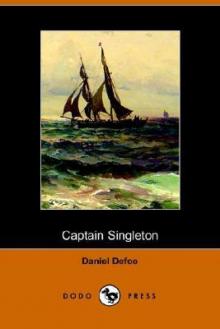 Captain Singleton
Captain Singleton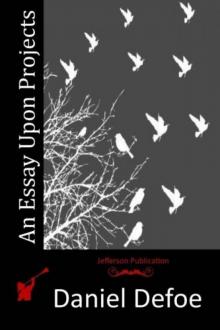 An Essay Upon Projects
An Essay Upon Projects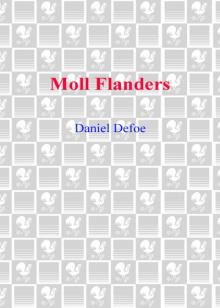 Moll Flanders Moll Flanders Moll Flanders
Moll Flanders Moll Flanders Moll Flanders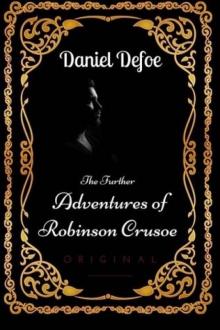 The Further Adventures of Robinson Crusoe
The Further Adventures of Robinson Crusoe Everybody's Business Is Nobody's Business
Everybody's Business Is Nobody's Business Robinson Crusoe
Robinson Crusoe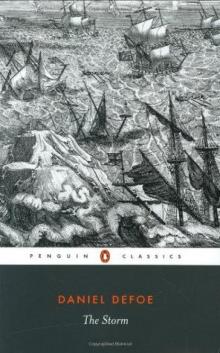 The Storm
The Storm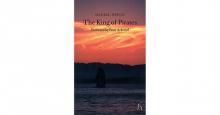 The King of Pirates
The King of Pirates History of the Plague in London
History of the Plague in London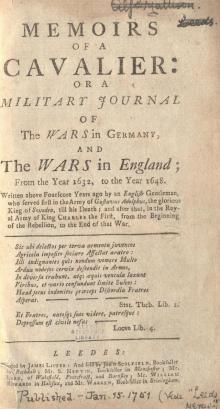 Memoirs of a Cavalier
Memoirs of a Cavalier_preview.jpg) The Life and Most Surprising Adventures of Robinson Crusoe, of York, Mariner (1801)
The Life and Most Surprising Adventures of Robinson Crusoe, of York, Mariner (1801)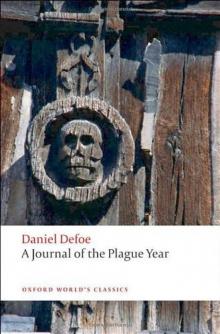 A Journal of the Plague Year
A Journal of the Plague Year_preview.jpg) The Life and Adventures of Robinson Crusoe (1808)
The Life and Adventures of Robinson Crusoe (1808)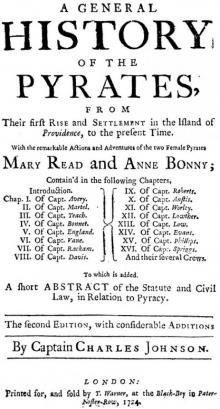 A General History of the Pyrates: / from their first rise and settlement in the island of Providence, to the present time
A General History of the Pyrates: / from their first rise and settlement in the island of Providence, to the present time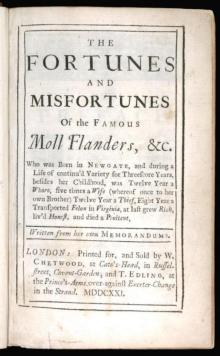 The Fortunes and Misfortunes of the Famous Moll Flanders
The Fortunes and Misfortunes of the Famous Moll Flanders_preview.jpg) The Fortunate Mistress (Parts 1 and 2)
The Fortunate Mistress (Parts 1 and 2) Robinson Crusoe — in Words of One Syllable
Robinson Crusoe — in Words of One Syllable From London to Land's End
From London to Land's End A New Voyage Round the World by a Course Never Sailed Before
A New Voyage Round the World by a Course Never Sailed Before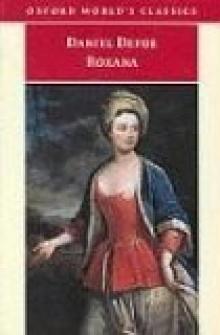 Roxana
Roxana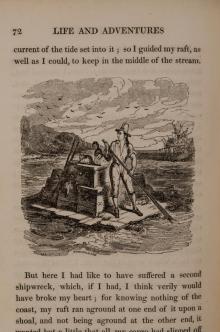 The Life and Adventures of Robinson Crusoe of York, Mariner, Volume 1
The Life and Adventures of Robinson Crusoe of York, Mariner, Volume 1_preview.jpg) Memoirs of Major Alexander Ramkins (1718)
Memoirs of Major Alexander Ramkins (1718)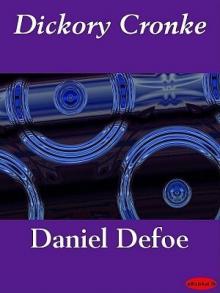 Dickory Cronke
Dickory Cronke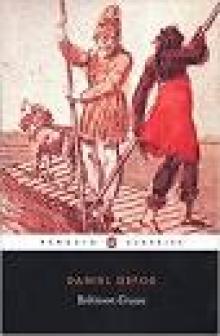 Robinson Crusoe (Penguin ed.)
Robinson Crusoe (Penguin ed.)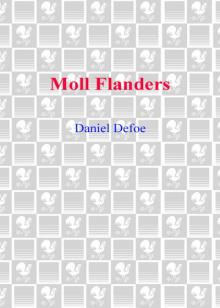 Moll Flanders
Moll Flanders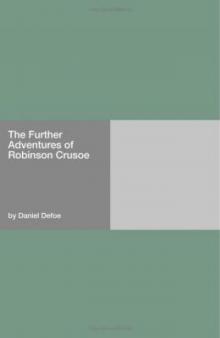 The Further Adventures of Robinson Crusoe rc-2
The Further Adventures of Robinson Crusoe rc-2